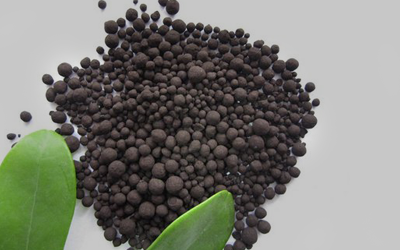N.P.K Fertilizers

Determine percentages of the major active ingredients in the package.
Determine percentages of the major active ingredients in the package. N-P-K (Nitrogen- Phosphorus- Potassium) are the 3 most abundant ingredients listed on EVERY fertilizer label. They are always in this order, N-P-K. You will see them on the label as three numbers. Such as: 30-10-10 / 10-5-5 / 21-0-0 But what does it mean and how do you know which formula you need? The first example, 30-10-10, means that if you had 100 pounds of that fertilizer there would be 30 pounds of available nitrogen, 10 pounds of available phosphorus and 10 pounds of available potassium (potash). The remaining 50 pounds are inert or inactive ingredients.
Know what each ingredient is used for.
Nitrogen is for green and growth. Phosphorus and Potassium for fruit, flower and roots. To turn a lawn green and get it growing, 21-0-0 is the fastest and cheapest way to go. That is Sulphate of Ammonia. However, to promote a healthy lawn that is more drought-tolerant, you would want the roots to be well developed also. A general purpose lawn fertilizer such as 10-6-4 would be a far better diet to achieve a truly healthy lawn.


Research your plants needs.
Check several sources. Compare notes on what different experts recommend for the type of plants you are growing. When making fertilizer purchases your knowledge of N-P-K percentages will aid in your decisions. Nitrogen Green/Growth. Phosphorus and Potassium = Fruit/Flower/Roots.
Urea 46% N
Urea is the most concentrated nitrogen fertilizer. It can be applied for all types of crops.
| Chemical formula | CO(NH2)2 | ||
|---|---|---|---|
| Characteristics | Urea is the most concentrated Nitrogen fertilizer. It contains Nitrogen in amide form, which in soil converts first into ammonium and then into nitrate forms. It is easily soluble in water. Using anti-caking agents ensures its free flowing during storing. Urea is not subject to RID or ADR regulations. | ||
| Parametres | Nitrogen (w tym biuret), between % (m/m) % | 46 ± 0,4 | |
| Biuret, %(m/m) – not more than | 1,2 | ||
| Water, %(m/m) – not more than | 0,5 | ||
| Content of granules with size 1-3,15 mm, %(m/m) – not less than | 90 | ||
| Packing | Bulk | ||
| 50 kg PE bags | |||
| 500 kg PP big-bags with PE insert | |||
| Transportation | The fertilizer should be transported in the means of transportation which protect the product from the action of water, precipitation, direct sunlight and damage to the packaging.The fertilizer is not subject to RID or ADR regulations. | ||
| Storage | Urea should be stored in dry, clean and well ventilated roofed compartments with moisture-proof foundation in the piles up to 10 layers of bags. Big-bags weighing up to 500kg may be stored in up to 2 layers. Urea must be protected from moisture. | ||
| Usage | Urea can be applied on all kinds of soils, except for very acid or just limed soils. It can be applied for all type of crops, both for seedbed and top dressing application. It can be applied in solid or liquid forms. | ||
| Recommended doses | Crops | Zalecanadawkanawozu (kg/ha) | |
| Winter cereals | 130 – 283 | ||
| Spring cereals | 65 – 261 | ||
| Spring rapeseed | 130 – 261 | ||
| Winter rapeseed | 304 – 435 | ||
| Potatoes | 130 – 261 | ||
| Sugarbeets and fodder beets | 283 – 391 | ||
| Mustard plant | 130 – 174 | ||
| Flax | 65 – 109 | ||
| Broad bean | 65 – 196 | ||
| Pea | 43 – 87 | ||
| Maize | 283 – 370 | ||
| Cereal-Legumes mixtures | 109 – 130 | ||
| Lucerne with grass | 174 – 391 | ||
| Grass | 370 – 500 | ||
| Grassland | 130 – 261 | ||
| While calculating dosage of the fertilizer one should take into account factors such as current soil analysis, its quality class and agronomical category, average yield per hectare in recent years, forecrop and the use of other nutritional components. | |||
